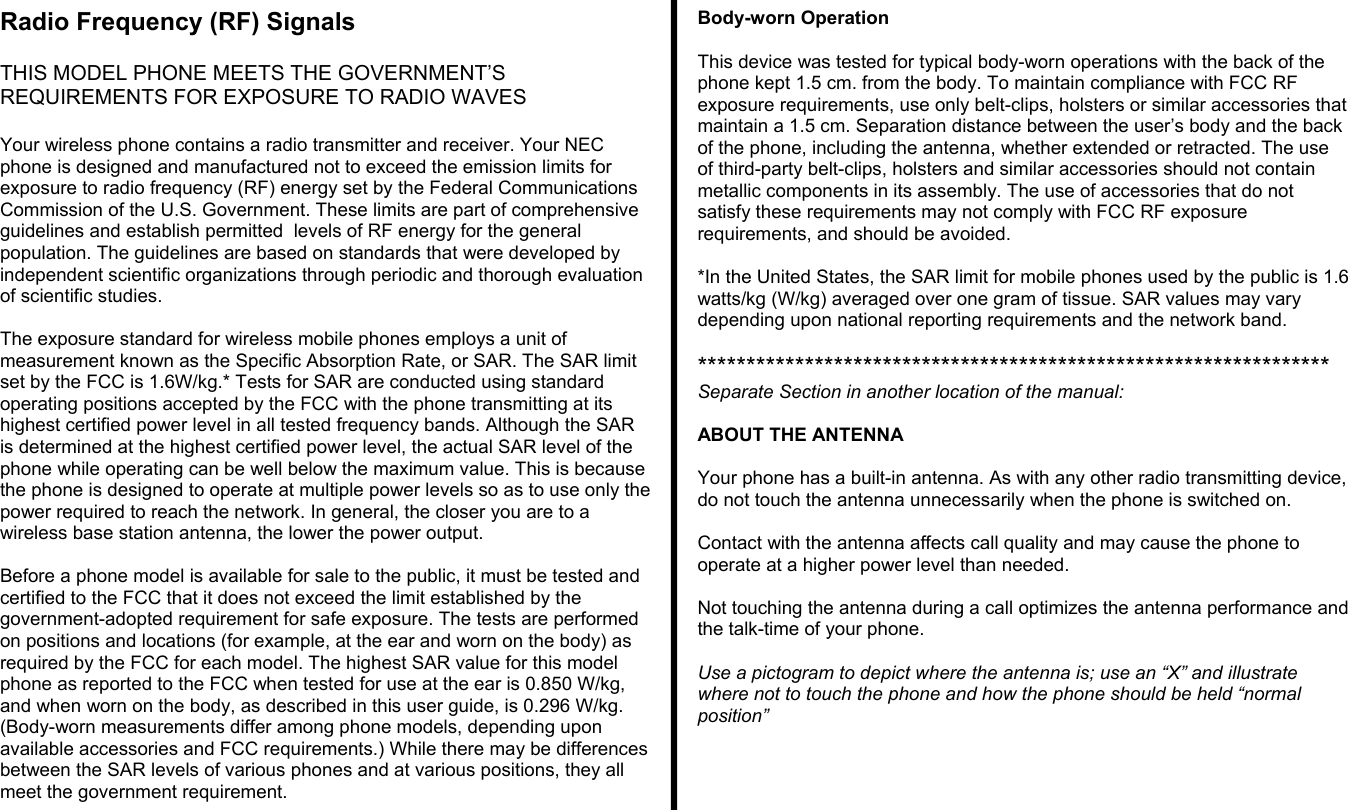NEC of America MP6J1E1-1F Dual-Band GSM Phone User Manual Radio Frequency RF Signals
NEC Corporation of America Dual-Band GSM Phone Radio Frequency RF Signals
Contents
- 1. Users Manual 1
- 2. Users Manual 2
- 3. Revised Users Manual per CRN 23099
Revised Users Manual per CRN 23099
